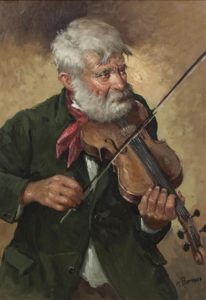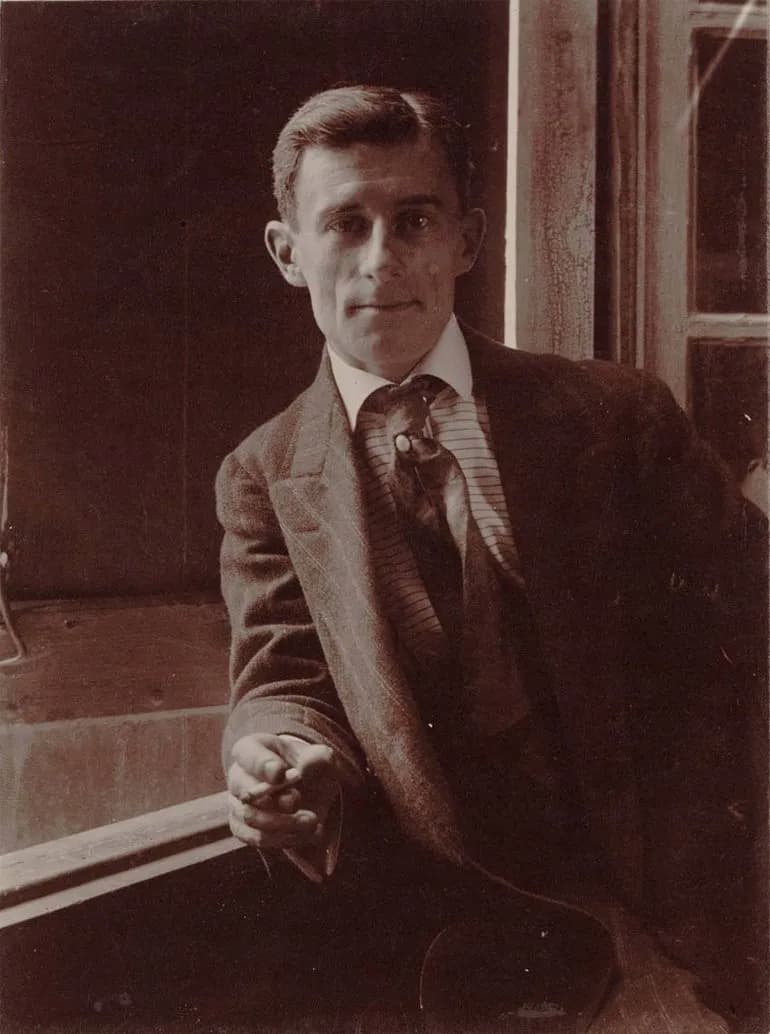Playing a musical instrument is an amazing endeavor. It’s thrilling when a performance is everything we want it to be and the audience erupts in applause. If we’ve conveyed the beauty, meaning, and emotion of the music, and not the physical effort, we’re gratified. Behind the scenes though, every time we pick up our instruments, we are challenged on every level. Mastering an instrument requires much more than innate ability. Developing precision, coordination, fluency, and speed, requires hours of diligent practice, concentration, and discipline, while enduring performance anxiety, the stress of auditions, and a highly competitive environment.

The Old Musician by Manet
Somehow, we are able to cope with these challenges. In fact, we are willing to do anything to bring off our performances, even to the point of self-destruction!
Many of us are unaware of the mishaps that may occur along the way. Playing a musical instrument is physically taxing. Despite our best intentions we’re at risk of injury due to several factors: unusual and awkward postures, long hours, endless repetition, and poor ergonomics such as ill-fitting chairs or equipment.
Unlike professional athletes and dancers who rarely continue at the elite level beyond their mid-30s, musicians have unusually long careers. It’s not uncommon for a musician to play in an orchestra three decades or more—not including the years of study and playing in student or amateur groups. I’ve lost count how many times I’ve performed Tchaikovsky Symphony No. 4, with its pages of tremolo, or very long works such as Shostakovich’s complex, confounding 70-minute Symphony No. 7.

Ivry Gitlis
People retire after 30 years in other careers! How do we keep it up?
Aging poses unique challenges for the musician. When our bodies become less resilient it’s more difficult to adapt to the strenuous nature of our professions. We’re more prone to injury in part due to muscle, bone, tendon, and ligament changes when our bodies slow down. Aging causes bones to become less stable, and the strength, size, and endurance of muscle tissue erodes. With time joints become less resistant to wear and tear, in part due to the fact that our cartilage—the tissue that cushions the tips of the bones in our joints—loses water, making joints more vulnerable to injury from repetitive motion and stress. Less flexible joints can cause us to lose range of motion.
Body composition changes as we age. Body fat increases, while muscle mass decreases. Older musicians might feel the need to practice more to maintain the high levels expected of us just to “keep up,” at a time when individuals in other professions are “winding down.”
 We might also become de-conditioned, even though we know we should exercise more to maintain strength and fluidity.
We might also become de-conditioned, even though we know we should exercise more to maintain strength and fluidity.
All of these issues contribute to reaching maximum exposure—a physical therapy term that indicates when muscles, ligaments, and tendons have broken down to the point they cannot function properly, when tissues reach the apex or the limit of what they are capable of.
Each individual’s maximum exposure varies according to their age, style of playing, posture, training, fitness levels, body size and build, and the number of years of playing. These individuals suffer from pervasive muscle fatigue, back pain, shoulder pain, chronic injuries, and a host of other issues.
 Our technique is more sluggish, our memory is not always dependable, and we are tighter and weaker than when we were younger, making some passages more difficult to execute. We may also find we don’t hear or see as well as we used to. Somehow, we continue our grueling and physically demanding schedules despite these changes.
Our technique is more sluggish, our memory is not always dependable, and we are tighter and weaker than when we were younger, making some passages more difficult to execute. We may also find we don’t hear or see as well as we used to. Somehow, we continue our grueling and physically demanding schedules despite these changes.
An older musician as a result may feel replaceable, undervalued, and threatened by new talent coming in, especially if we notice our technique declining, further derailing our performances.
Before we hit the wall, here are a few suggestions:
1. KEEP MOVING
Our bodies grow old because we stop moving. Inactivity accelerates muscle and bone loss, and stiffness may occur. Research indicates we can reduce the risk of osteoporosis, by regularly performing weight-bearing exercise, such as walking and lifting weights.
Flexibility is crucial to musicians to avoid overuse injuries. Good flexibility enables your body to align properly. Some form of strengthening exercises and aerobic conditioning is very important to improve endurance. After years of playing in postures sometimes required by our instruments, asymmetrical body development may occur. If you feel pain and stiffness consult a physical therapist or trainer who knows musicians’ issues. They can help you create a training regimen to fit your needs, as well as alert you to effective injury prevention exercises.
2. BE PREPARED AND STAY IN SHAPE
More is not better. Practice smarter not harder. Our motions tend to be jerky when we don’t know what is coming up in the music. Whenever possible, if you are able to plan fingerings and study the music, you will be more likely to maintain ease and flow of your body motions. Try to be consistent with practice. If you have taken several days off get back into condition gradually.
3. WARM UP MORE SLOWLY AND THOROUGHLY
Muscles need to be actively moved to increase blood circulation and deliver a greater amount of oxygen and nutrition to cells. Moving slowly loosens fascia and tendons, allowing them to be more flexible and pliable. Warming up also creates more synovial fluid release, which allows your bones to slide on each other with greater ease. First, warm-up away from the instrument. A few minutes of aerobic exercise even jumping in one place or a brisk walk will do the trick. Then warm-up at the instrument in the mid-range of your instrument- playing not to high, not too low; not too fast and not too slow. The key is to start slowly.
4. EXAMINE YOUR TECHNIQUE
Release at every opportunity. Don’t hold awkward positions. Make sure you release fingers and thumbs. A fluent technique is from lifting quickly. Keep your shoulders down, your torso facing forward, keep your head in neutral and upright, and alternate standing and sitting if your instrument allows you to do so.
5. TAKE MORE BREAKS
Underplaying may be an issue with aging musicians but overplaying is as well. A few-minute break every hour helps to alleviate tension that may build up. While performing keep tension at bay by rolling your shoulders, letting your arms hang down, and moving and wiggling whenever possible.
6. ADJUST YOUR EQUIPMENT TO FIT YOUR NEEDS
Make sure you have eyeglasses for the exact distance to your music stand. Place music stands directly in front of you at eye level. Move your instrument rather than twist your body to see better. Purchase ergonomic cushions that allow your chair to be at a proper height for you. Your knees should descend from your pelvis, your weight on your feet and forward, with a natural lumbar curve in your back. Make sure instruments are properly adjusted so that they are as easy to play as possible.
7. CARRY EARPLUGS
with you at all times for unexpected assaults from loud volumes and wear them when the sound goes beyond safe limits of 85 decibels. Take silence breaks of several hours after loud concerts.
8. SEE A LICENSED HAND THERAPIST
If you have finger or thumb arthritis see a PT. They can fit you with ring splints, a fitted prescribed medical device, or use other modalities to help.
The goal as we age is to play within our own tissue tolerance by monitoring our posture, the force and intensity with which we play, and limiting the duration and repetition from day to day. Keep tabs on how your body feels and make necessary adjustments so you can continue to play for years to come.




As a lifelong ambitious amateur pianist, I always thought I’d have the time to master more difficult repertoire once I’d retired. Not that easy–developing those skills in one’s 8th decade is a formidable challenge, and a sprained finger following an otherwise benign tumble on strange stairs is also an impediment. My solution is to explore less familiar and uncommonly beautiful rep that many have never heard, especially that of women whose works weren’t widely known or even ackowledged until recently. Dazzling runs and arpeggios? I’ll leave those for a future lifetime…
As the ‘youngins say , I Hear You. I obtain easy piano sheet music of pieces I enjoy listening to in their full version. Currently working on Wabash Cannonball and 2 Copland pieces; Down a Country Lane and main theme from Our Town.
It gives me great joy to hear a 90 year old play pieces he loves! I want to be like this too in 26 years
Excellent article. I want to point out that hearing a mature musician is a gift. Musicianship and artistic insight do NOT decrease with age, so there is a lot to be said for a performance by someone in their 60s, 70s and well beyond. I have heard performances by musicians in their 90s that were very fulfilling and evocative. We must keep that in mind, even though we are physically hurting. Our generation needs to resist the idea that perfection in technical aspects is everything. It’s easy to fall into that mindset.